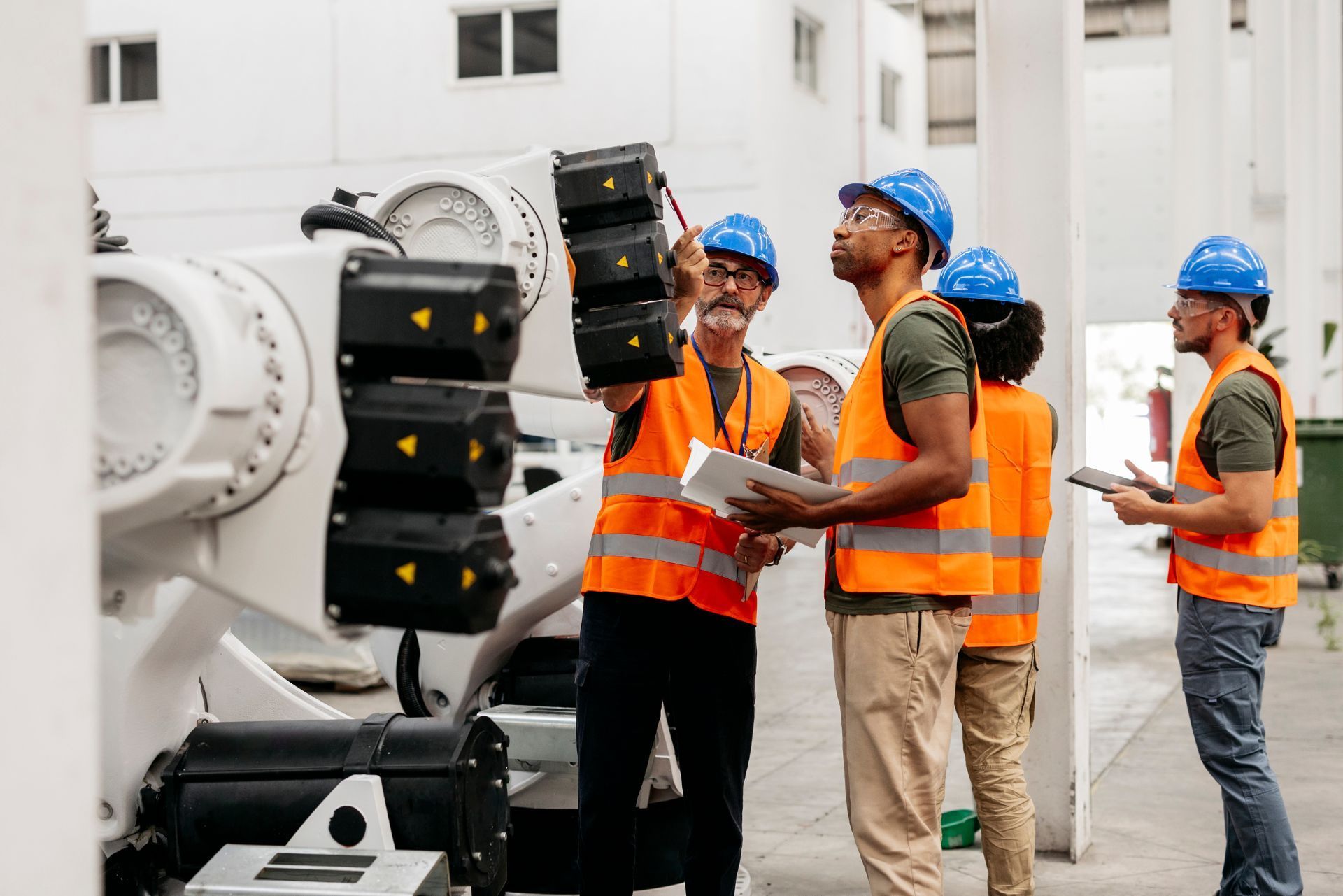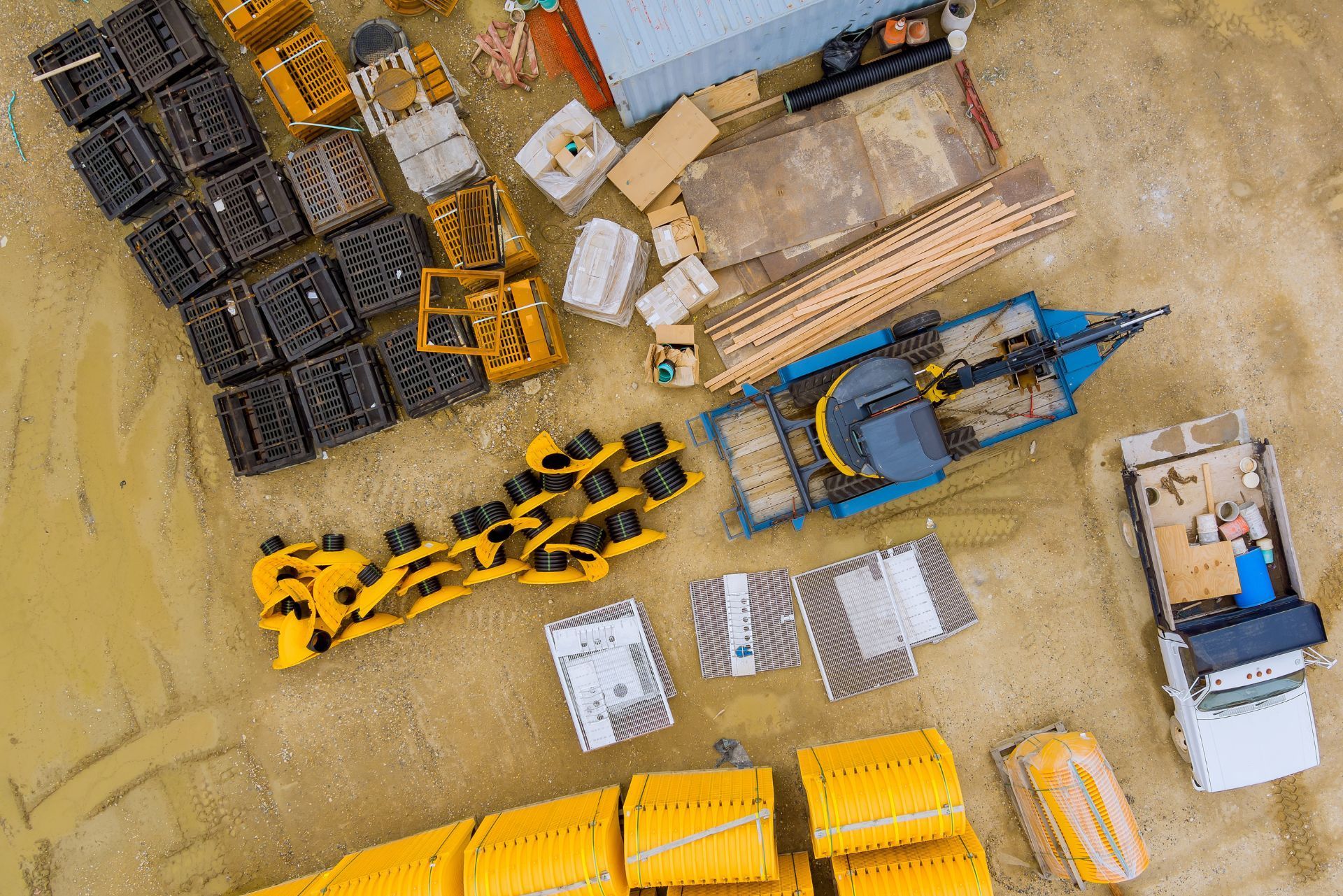Top 3 Recommended Policies

In today's fast-paced business environment, maintaining operational efficiency is crucial. Equipment breakdowns can lead to significant financial losses and disruptions. This is where equipment breakdown insurance comes into play. It provides essential coverage for businesses to protect against the costs associated with the failure of critical machinery and equipment. This article delves into the intricacies of equipment breakdown insurance, its importance, coverage options, and how to choose the right policy.
What is Equipment Breakdown Insurance?
Equipment breakdown insurance, often referred to as boiler and machinery insurance, is a specialized type of coverage designed to protect businesses from losses due to the unexpected breakdown of equipment. Unlike standard property insurance, which may not cover equipment failure, this insurance specifically addresses the costs associated with repairing or replacing damaged machinery.
This type of insurance typically covers a wide range of equipment, including boilers, HVAC systems, production machinery, and even computers. The coverage can extend to direct damages, lost income due to downtime, and sometimes even the costs of hiring temporary replacements. For instance, a manufacturing plant that relies heavily on its assembly line machinery may face significant losses if a critical piece of equipment fails. In such cases, equipment breakdown insurance can be a lifesaver, covering not just the repair costs but also the income lost during the downtime, allowing the business to recover more swiftly.
Why is Equipment Breakdown Insurance Important?
Every business relies on equipment to operate efficiently. A sudden breakdown can halt production, disrupt services, and lead to financial strain. Equipment breakdown insurance plays a vital role in mitigating these risks. Here are a few reasons why it is essential:
- Financial Protection: The costs associated with repairing or replacing broken equipment can be substantial. This insurance helps cover those expenses, ensuring that businesses do not face crippling financial burdens. For example, the cost of replacing a large industrial boiler can run into tens of thousands of dollars, a sum that many small to medium-sized enterprises may struggle to pay out of pocket.
- Minimized Downtime: With coverage in place, businesses can quickly address equipment failures, allowing for faster repairs and minimizing downtime. This is particularly crucial in industries where time is money, such as manufacturing or food services, where delays can lead to missed contracts or spoiled inventory.
- Peace of Mind: Knowing that equipment is insured provides business owners with peace of mind, allowing them to focus on growth and operations rather than worrying about potential equipment failures. This peace of mind can also extend to employees, who may feel more secure in their roles when they know that the tools they rely on are protected.
Moreover, equipment breakdown insurance can also include additional services, such as risk assessment and loss prevention advice, which can help businesses identify potential vulnerabilities in their operations. By proactively addressing these risks, companies can not only reduce the likelihood of equipment failure but also potentially lower their insurance premiums over time. This proactive approach to risk management is becoming increasingly important in today’s competitive business landscape, where every advantage counts.

What Does Equipment Breakdown Insurance Cover?
The coverage provided by equipment breakdown insurance can vary significantly from one policy to another. However, most policies generally include the following key components:
1. Repair and Replacement Costs
This is the primary coverage offered by equipment breakdown insurance. It covers the costs associated with repairing or replacing damaged equipment. This can include parts, labor, and any necessary shipping fees. In many cases, the policy will cover the full replacement cost, ensuring that businesses can quickly restore their operations. This is particularly important for industries that rely heavily on specialized machinery, where delays in repairs can lead to significant financial losses and disruptions in service delivery.
2. Business Interruption Coverage
In addition to covering repair costs, many equipment breakdown insurance policies also include business interruption coverage. This aspect of the policy compensates businesses for lost income during the downtime caused by equipment failure. This is critical for maintaining cash flow and ensuring that fixed expenses can still be met while operations are halted. For instance, a manufacturing plant that experiences a machinery breakdown may face not only the cost of repairs but also the challenge of meeting contractual obligations to clients. Business interruption coverage can provide the necessary financial support to navigate these challenges.
3. Additional Expenses
Some policies may also cover additional expenses incurred as a result of the equipment breakdown. This can include costs for temporary equipment rentals, overtime labor to expedite repairs, or even the costs associated with relocating operations if necessary. These additional coverages can be invaluable in ensuring that a business can continue to operate smoothly during a crisis. Moreover, businesses might also incur costs related to training employees on new equipment or technology, which can be covered under certain policies, thus ensuring that the workforce remains efficient and well-prepared for any transition.
4. Coverage for Specialized Equipment
Many businesses utilize specialized equipment that may not be covered under standard insurance policies. Equipment breakdown insurance often includes provisions specifically designed to address the unique needs of such machinery. For example, a restaurant may rely on high-end kitchen appliances that are essential for daily operations. If one of these appliances fails, the financial implications can be severe. Policies that cater to specialized equipment ensure that businesses are not left vulnerable to unexpected breakdowns, allowing them to maintain their reputation and service quality.
5. Preventive Maintenance Incentives
Some insurance providers offer incentives for businesses that engage in regular preventive maintenance of their equipment. This can include discounts on premiums or additional coverage options. By encouraging businesses to invest in the upkeep of their machinery, insurers aim to reduce the likelihood of costly breakdowns. Regular maintenance not only extends the life of equipment but also enhances operational efficiency, making this aspect of coverage a win-win for both insurers and policyholders. This proactive approach can lead to a more sustainable business model, where unexpected expenses are minimized and productivity is maximized.
Common Exclusions in Equipment Breakdown Insurance
While equipment breakdown insurance provides extensive coverage, it is essential to be aware of common exclusions that may apply. Understanding these exclusions can help businesses avoid unexpected gaps in coverage.
1. Wear and Tear
Most policies will not cover damages resulting from normal wear and tear. Equipment naturally deteriorates over time, and insurance is not designed to cover maintenance issues that arise from aging machinery. Regular maintenance and inspections are crucial to prevent breakdowns due to wear and tear. Businesses should establish a routine maintenance schedule and keep detailed records of all maintenance activities to demonstrate diligence in care and upkeep. This proactive approach not only helps in maintaining equipment efficiency but can also be beneficial during insurance assessments or claims processes.
2. Negligence
If a breakdown occurs due to negligence, such as failing to perform necessary maintenance or ignoring warning signs, the insurance company may deny the claim. It is vital for businesses to maintain their equipment properly and adhere to recommended maintenance schedules. Furthermore, training employees on the importance of equipment care can significantly reduce the risk of negligence-related incidents. Implementing a culture of safety and responsibility around equipment use can help in identifying potential issues before they escalate into costly breakdowns.
3. Intentional Damage
Any damages resulting from intentional acts, whether by employees or external parties, are typically not covered. Insurance is designed to protect against unforeseen events, and intentional damage falls outside this scope. Businesses should consider implementing security measures, such as surveillance systems or access controls, to deter vandalism and other malicious acts. Additionally, having clear policies and consequences for intentional damage can help reinforce a culture of accountability among employees, thereby minimizing risks associated with intentional harm.
4. Catastrophic Events
Another common exclusion in equipment breakdown insurance is damage caused by catastrophic events, such as natural disasters. While these events can lead to significant equipment failure, most policies do not cover losses stemming from floods, earthquakes, or severe storms. Businesses located in areas prone to such events should consider additional coverage options, such as flood insurance or earthquake insurance, to ensure comprehensive protection. Preparing an emergency response plan that includes equipment protection strategies can also mitigate risks associated with catastrophic events.
5. Equipment Age and Obsolescence
Insurance policies often exclude coverage for equipment that is deemed obsolete or outdated. As technology advances, older machinery may not only be less efficient but also more prone to breakdowns. Businesses should regularly evaluate their equipment and consider investing in upgrades or replacements to avoid potential exclusions related to age. Staying informed about industry trends and technological advancements can help businesses make informed decisions about their equipment lifecycle, ensuring they maintain operational efficiency and minimize risks associated with outdated machinery.
How to Choose the Right Equipment Breakdown Insurance Policy
Selecting the right equipment breakdown insurance policy requires careful consideration of various factors. Here are some essential steps to guide the decision-making process:
1. Assess Your Equipment
Begin by conducting a thorough assessment of all equipment used in your business. Identify which items are critical to operations and would cause the most significant financial impact if they were to break down. This assessment will help determine the level of coverage needed. Consider not only the age and condition of the equipment but also the frequency of use and the potential costs associated with downtime. For instance, a manufacturing plant heavily reliant on machinery for production may face substantial losses if a key piece of equipment fails, making it imperative to prioritize coverage for those critical assets.
2. Evaluate Coverage Options
Different insurers offer various coverage options, so it is essential to compare policies. Look for comprehensive coverage that includes repair costs, business interruption, and any additional expenses that may arise. Pay attention to the limits and deductibles associated with each policy. Additionally, consider endorsements or riders that can enhance your coverage, such as protection against power surges or mechanical breakdowns. Understanding the nuances of each policy can help you avoid gaps in coverage that could leave your business vulnerable in the event of an equipment failure.
3. Consult with an Insurance Professional
Engaging with an insurance broker or agent who specializes in equipment breakdown insurance can provide valuable insights. They can help navigate the complexities of different policies, ensuring that the chosen coverage aligns with the specific needs of the business. A knowledgeable professional can also assist in identifying potential risks that may not be immediately apparent, such as the impact of seasonal fluctuations on equipment usage or the implications of recent technological advancements. By leveraging their expertise, you can make a more informed decision that not only protects your assets but also supports the long-term sustainability of your operations.
Cost Factors for Equipment Breakdown Insurance
The cost of equipment breakdown insurance can vary widely based on several factors. Understanding these factors can help businesses budget effectively for this essential coverage.
1. Type of Equipment
The type and value of the equipment being insured play a significant role in determining premiums. High-value machinery or specialized equipment may incur higher premiums due to the increased risk and potential repair costs associated with breakdowns.
2. Business Size and Industry
Insurance providers often consider the size of the business and the industry in which it operates. Larger businesses with more equipment may face higher premiums, while industries with higher risks of equipment failure, such as manufacturing, may also see increased costs.
3. Claims History
A business's claims history can significantly impact insurance costs. A history of frequent claims may lead to higher premiums, while a clean claims record can result in lower rates. Businesses should strive to maintain their equipment and minimize breakdowns to keep insurance costs manageable.

Understanding the Claims Process
Filing a claim for equipment breakdown can be a straightforward process if the necessary steps are followed. Understanding the claims process can help ensure that businesses receive timely compensation for their losses.
1. Document the Damage
When an equipment breakdown occurs, it is essential to document the damage thoroughly. Take photographs, keep records of maintenance, and gather any relevant information that can support the claim. This documentation will be crucial when filing with the insurance provider.
2. Notify the Insurer Promptly
Most insurance policies require prompt notification of a claim. Contact the insurance provider as soon as possible to report the breakdown and initiate the claims process. Delays in notification may result in complications or denial of the claim.
3. Work with Adjusters
After filing the claim, an insurance adjuster will likely be assigned to assess the situation. Be prepared to provide any additional information or documentation requested by the adjuster. Their assessment will play a significant role in determining the outcome of the claim.
Real-Life Examples of Equipment Breakdown Insurance in Action
Understanding how equipment breakdown insurance functions in real-life scenarios can provide valuable insights into its importance. Here are a few examples:
1. Manufacturing Plant Failure
A manufacturing plant experienced a sudden failure of its primary production machine, halting operations for several days. Fortunately, the business had equipment breakdown insurance, which covered the repair costs and provided compensation for lost income during the downtime. This coverage allowed the plant to recover quickly without facing severe financial strain.
2. HVAC System Breakdown
In a commercial building, the HVAC system broke down during a peak summer month, leading to uncomfortable conditions for tenants and potential loss of rental income. The property owner filed a claim under their equipment breakdown insurance, which covered the repair costs and provided funds to rent temporary cooling units while repairs were underway. This proactive approach minimized tenant dissatisfaction and maintained rental income.
3. Restaurant Kitchen Equipment Failure
A restaurant faced a significant loss when its commercial oven broke down during a busy dinner service. The owner quickly contacted their insurance provider, who covered the repair costs and compensated for the lost revenue during the downtime. This timely support allowed the restaurant to resume operations swiftly and maintain customer satisfaction.
Conclusion
Equipment breakdown insurance is a vital component of risk management for businesses that rely on machinery and equipment. By understanding the coverage options, exclusions, and the claims process, business owners can make informed decisions that protect their investments and ensure operational continuity.
Investing in the right equipment breakdown insurance policy not only safeguards against unexpected financial burdens but also provides peace of mind. As businesses continue to evolve and rely on advanced technologies, having robust insurance coverage will remain a critical aspect of maintaining operational efficiency and resilience.
Contact Us


